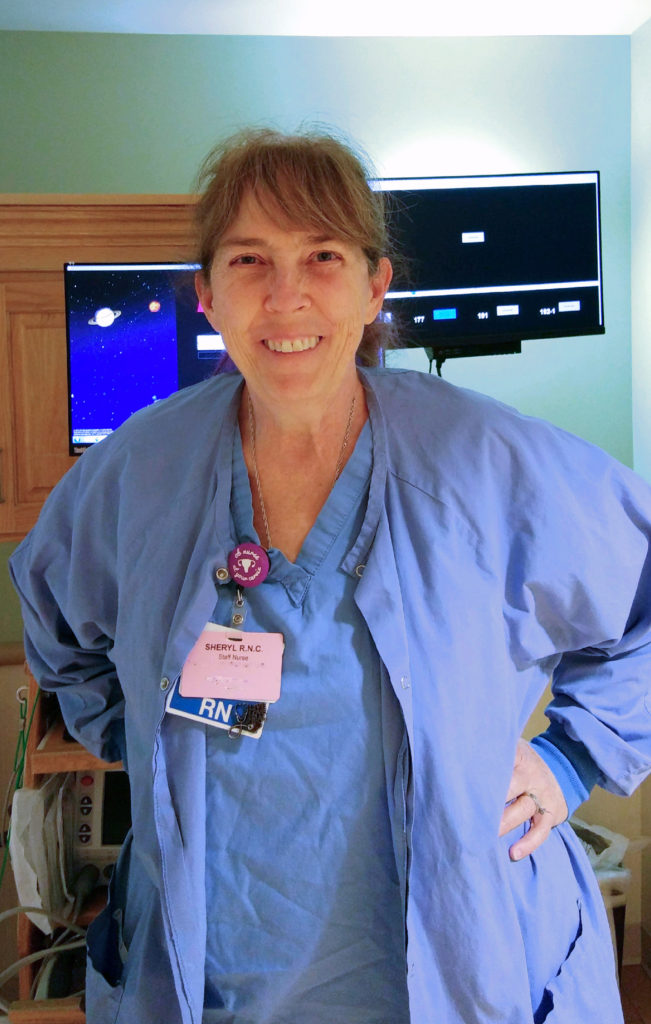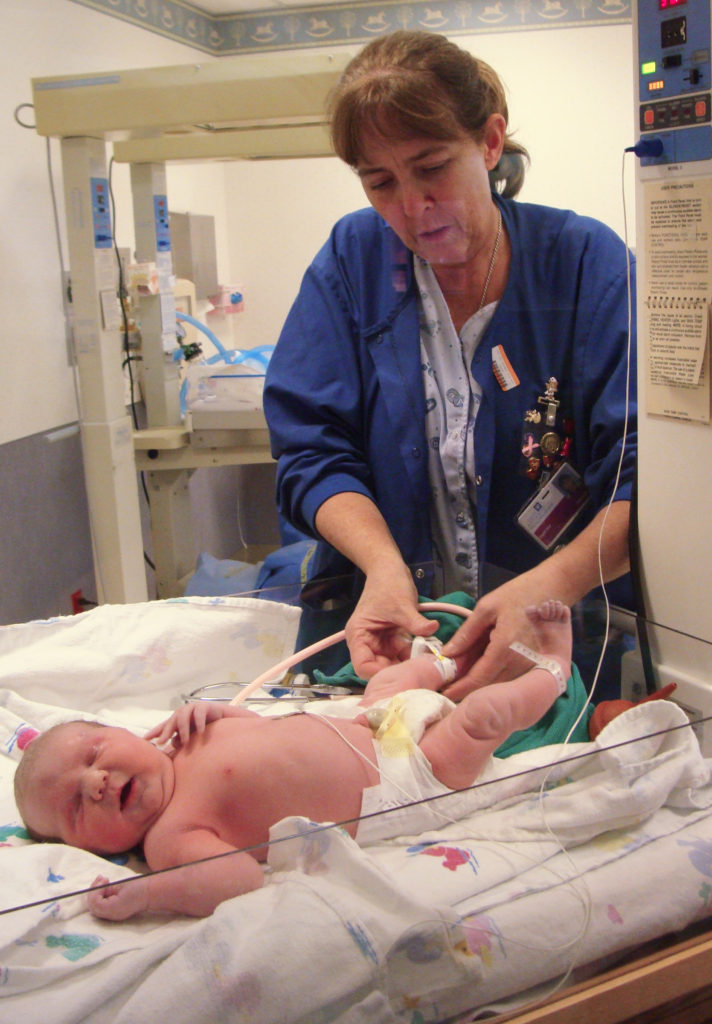
Pandemic or not, babies keep coming, and obstetrics doctors and nurses are still there to deliver and care for them and their mothers.
Sheryl Saboff, a registered nurse at a regional hospital has been working in maternity wards, delivery wards and birthing centers (whatever the popular name was at the time) for most of her more than 33 years as a nurse, and she’s never regretted her chosen profession, though she didn’t initially intend to take the obstetrics route.
But it seems fate chose the path for her.
She knew she wanted to do something in the medical field, and oddly enough, it was her mother-in-law, Leona Saboff, who inspired her to become a nurse.
“She had five daughters, none of whom became a nurse,” Saboff said. “She first worked for a country doctor, and he got her into St. Elizabeth’s nursing school in Granite City, Illinois. At that time (1940s), it was hard to get into nursing school if you didn’t know somebody.”
After Leona began working at another area hospital, she met her future husband, who was a patient, and the rest, as they say, is history.
“I thought I wanted to do pre-med. That lasted one day,” Sheryl Saboff said. “I thought maybe a veterinarian. That didn’t work. Medical technician? Lab technician? Then I decided it would be nursing, and right away, I knew that was it.”
She graduated from the nursing program at Lewis and Clark Community College, and worked two years in general medical and five years in pediatrics, then moved on to obstetrics. Since then she’s changed hospitals, and even thought of changing to other areas of specialization, but it always worked out that she found positions in obstetrics. In all, she estimates she has been present or participated in varying degrees at more than 2,000 births.
Over the years, Saboff has run into mothers or even the grandmothers from deliveries she’s previously attended.
“It feels really great when someone remembers you and comes up to say how the baby is doing, or that they are now grown. I’m always amazed that they remember me,” Saboff said. “One woman answered the phone when I called another hospital for something unrelated, and when I told her my name, she remembered me from when she gave birth, and said because of me, she had gone to nursing school. She liked the way I did my job. That made me feel really good.”
One year, on Dec. 31, a mother came in to the hospital, pregnant with twins, and someone jokingly said it would be strange if the two babies were born in two different years. And that’s exactly what happened. One twin was born near midnight on Dec. 31, and the second came about 20 minutes later, on Jan. 1.

Saboff was even “the baby catcher” when her grandson, Sheldon, was born, which she explained is the nurse that cares for the baby, while the labor nurse cares for the mom.
“I gave him his bath and everything. It was fun,” she said.
Saboff’s daughter, Michelle, decided she, too, wanted to go to nursing school.
“I loved it that she wanted to, but I stressed to her that she needed to make sure she did it because it’s something she really wanted to do; the personal rewards. Don’t do it for the money, because there can be heartache and there can be difficulties.”
Michelle went to nursing school, and in the end, she also found herself working in obstetrics.
Saboff has been working the night shift since around 1980, and when people ask how she is able to sustain that, she says it’s been her normal routine for so long, it would be hard to go back to daytime shifts. And though she feels she received an excellent education, she believes that her more than three decades of nursing experience has been an even better teacher.
“There’s so much to learn about humans and situations that can arise,” she said.
And of course, practices are always evolving and/or changing, like natural childbirth preference, epidural (or not), medication choices, breast feeding (or not) and education about it and becoming a mother. Changes have also occurred in how much time new babies spend with their moms while at the hospital.
“There’s a lot more ‘rooming in’ than there used to be,” Saboff said. “Now, babies stay in the room most of the day or even all night with their mother.
And we can’t ignore the fashion aspect of nursing.
The cap, that was long viewed as a privilege to wear, was also often referred to as a symbol of dignity.
Saboff remembers that the nuns at one of the hospitals she worked in the early days of her career, would say, “Don’t forget to put on your ‘dignity.’”
But those days are long gone, and though nurses may still be proud of the hat itself, you don’t see many (if any) wearing them on a regular work day.
And white nurse’s dress uniforms have been replaced, for the most part, with comfortable scrubs that are easier to work in.
But no matter how practices change, Saboff said in general, people do not.
“Most people really appreciate that you are there to take care of them,” she said. “It is very rewarding, and it warms my heart to do my job.”
